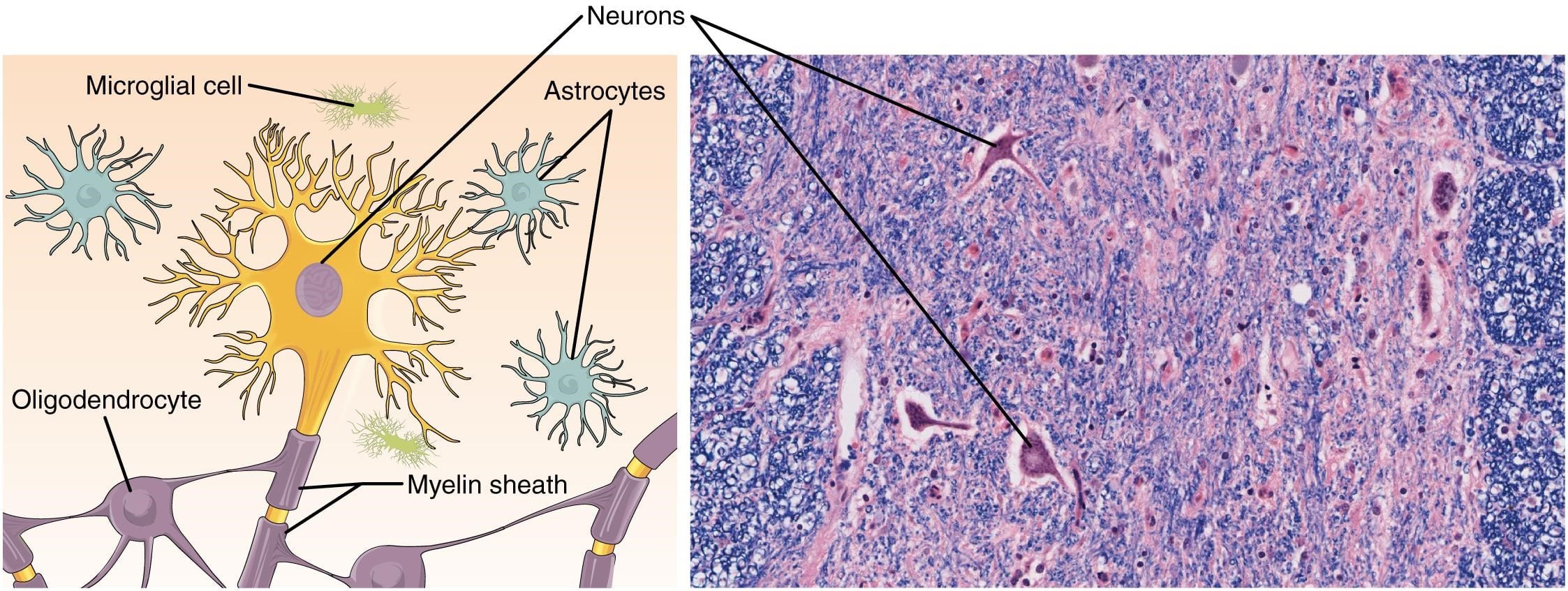Basic Neuroanatomy
Understanding the intricate workings of the human brain is paramount for any professional in the field of psychiatry. By encompassing the neurological underpinnings through to the nuanced neurochemical pathways, this chapter furnishes Psychiatry residents with the knowledge requisite for mastering the intricacies of neurocognitive disorders, preparing them for the In-service and ABPN Psychiatry Boards examinations.
The initial sections of the chapter lay the groundwork with an exploration of the central nervous system. Subsequent sections navigate through the blood-brain barrier and cortex anatomy. A detailed examination of the brain’s lobes elucidates their respective syndromes, offering insight into various neurocognitive implications.
The chapter further discusses cranial nerve anatomy, highlighting the sensory and motor functionalities that these nerves govern. Moreover, the chapter’s discourse extends to the vascular anatomy, focusing on the cerebral vascular system.
In the concluding sections, the chapter synthesizes information on high-yield ischemic stroke lesions and the pivotal role of the thalamus and hypothalamus.
Central Nervous System Histology
Glial cells
- May be classified as macroglia (which include astrocytes, oligodendrocytes, and ependymal cells) and microglia.
- Provide support and protection for neurons.
Astrocytes
- Support function of neurons in multiple ways:
- Regulates interstitial fluid.
- Modulates signals that regulate blood flow in response to neuronal activity.
- Provides structural support of the blood-brain barrier
- Provides nutritional support via glycogen storage.
- Expresses the enzyme glutamate synthase which is important for the removal of excess glutamate and GABA from synapses.
- Produces numerous angiogenic factors including VEGF.
- VEGF decreases the stability of the blood-brain barrier with inflammatory conditions and CNS tumors.
- Astrocytes become reactive and hypertrophic from injury, infection, or chronic neurodegeneration.
Oligodendrocytes
- Responsible for the formation of myelin in the central nervous system
- Myelin provides electrical insulation that allows for saltatory conduction, the speed of which is determined by the length of the internodal myelin segments. Larger axonal diameters conduct faster than smaller diameters.
- Oligodendrocytes have condensed, rounded nuclei and unstained cytoplasm.
- Oligodendrogliomas are primary brain tumors with a classic ‘chicken wire’ appearance on histopathology.
Ependymal cells
- Produces and facilitates the movement of cerebrospinal fluid (CSF).
- Lines the ventricles and central canal of the spinal cord.
- Resembles simple cuboidal or columnar epithelium with some cilia and microvilli on histopathology.
Microglia
- The primary immune cell of the central nervous system.
- Responsible for antigen presentation
- Activates in response to tissue damage and ischemic injury.
- The smallest and rarest glial cell.
Neuronal cells
- Responsible for receiving, integrating, and propagating information to other cells.
- Contains three parts; dendrites, cell body, and axon(s).
- Dendrites
- Receive information from other neurons at synapses.
- Changes in dendritic spines are critical for neural plasticity that occurs during development and learning.
- Cell body
- The main synthetic and trophic center of the cell that contains the nucleus and most organelles.
- Easily identified by a large central and euchromatic nucleus with a prominent nucleolus.
- Axons
- Conducts information to muscles, glands, or neurons.
- Axons terminate at synapses.
- Dendrites
Log in to view the remaining 60-90% of page content!
New here? Choose an account!
1 Month Plan
Full Access Subscription-
Access to all chapters
-
Access to all images and cases
-
Access to all flashcards
-
Access to Full Question Bank
3 Month Plan
Full Access Subscription-
Access to all chapters
-
Access to all images and cases
-
Access to all flashcards
-
Access to Full Question Bank
1 Year Plan
Full Access Subscription-
Access to all chapters
-
Access to all images and cases
-
Access to all flashcards
-
Access to Full Question Bank


